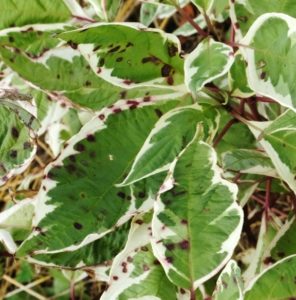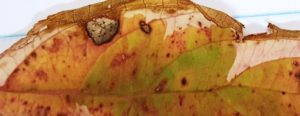Ornamental dogwoods are prone to several leaf spot diseases, but the fungus, Septoria, is commonly found in Indiana. It causes angular, brown lesions bordered by a purplish color on the leaf. The leaf spot symptoms are similar to dogwood anthracnose, however, Septoria does not infect the twigs or branches so it is a much less damaging disease. Throughout summer, spots may become numerous enough to cause early leaf drop. While the disease does not cause serious harm to the plant in any given year, multiple years of heavy infection may weaken the plant, making it more susceptible to other diseases or winter injury.
Septoria overwinters in dead leaf material left around the plant. Spores can spread through wind and rain. Symptoms tend to first appear after periods of warm and humid weather and will progress through the summer. In severe cases, leaves will yellow and fall from the plant.
To reduce inoculum for the following year, dead leaves should be raked from under the plant and disposed of. Dogwoods may be treated preventatively with a fungicide, beginning at bud break. Refer to the table below for recommended fungicides. Reapplication may occur two to three more times at 14-day intervals if conditions are favorable for disease development. Please follow all instructions listed on the fungicide label.


